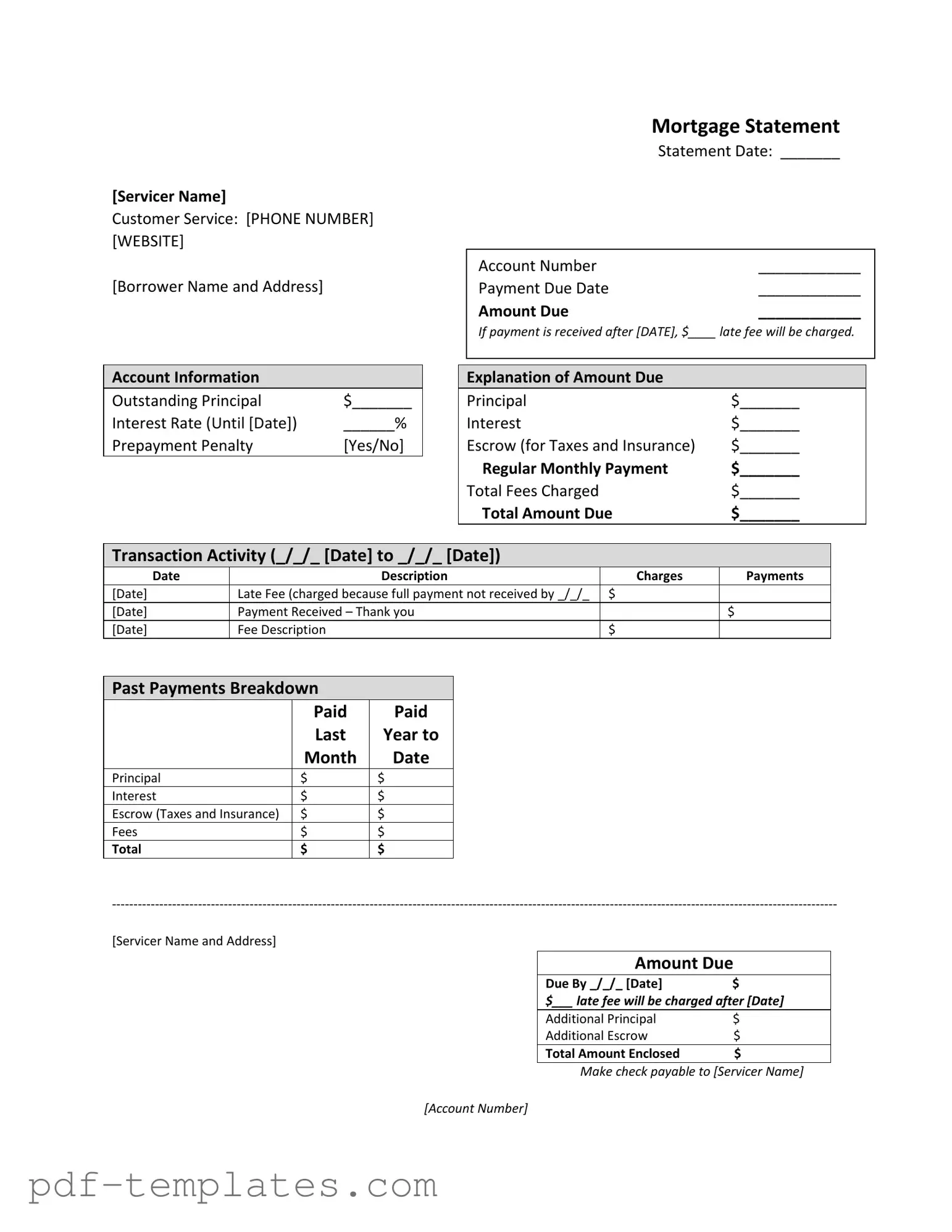The first document similar to a Mortgage Statement is a Billing Statement. A Billing Statement provides a summary of charges incurred over a specific period, detailing the amounts owed and the due dates. Like a Mortgage Statement, it typically includes account information, payment history, and any fees that may apply if payments are not made on time. Both documents serve to inform the recipient of their financial obligations and the status of their account, ensuring transparency in financial transactions.
A second comparable document is a Loan Statement. A Loan Statement outlines the terms of a loan, including the principal balance, interest rate, and payment history. Similar to a Mortgage Statement, it breaks down the amounts due, including principal and interest, and may indicate any late fees or penalties. Both statements help borrowers track their repayment progress and understand their financial commitments, reinforcing the importance of timely payments.
For those needing to document their trailer transactions, the "easy Texas Trailer Bill of Sale form" is a valuable resource. This form lays out the necessary details to confirm ownership transfer, facilitating a straightforward sale process. Interested individuals can find this essential document at Texas Trailer Bill of Sale form.
A third document that bears resemblance is a Credit Card Statement. This statement summarizes the transactions made on a credit card account during a billing cycle. It lists the total balance, minimum payment due, and due date, akin to a Mortgage Statement's breakdown of amounts owed. Both documents aim to provide clear information on financial obligations, helping individuals manage their finances effectively and avoid late fees.
Lastly, a Utility Bill is another document similar to a Mortgage Statement. A Utility Bill details the services provided, usage, and the total amount due for that billing cycle. Like a Mortgage Statement, it includes information about payment due dates and potential late fees. Both documents serve as reminders of financial responsibilities and encourage timely payments to avoid service interruptions or additional charges.
